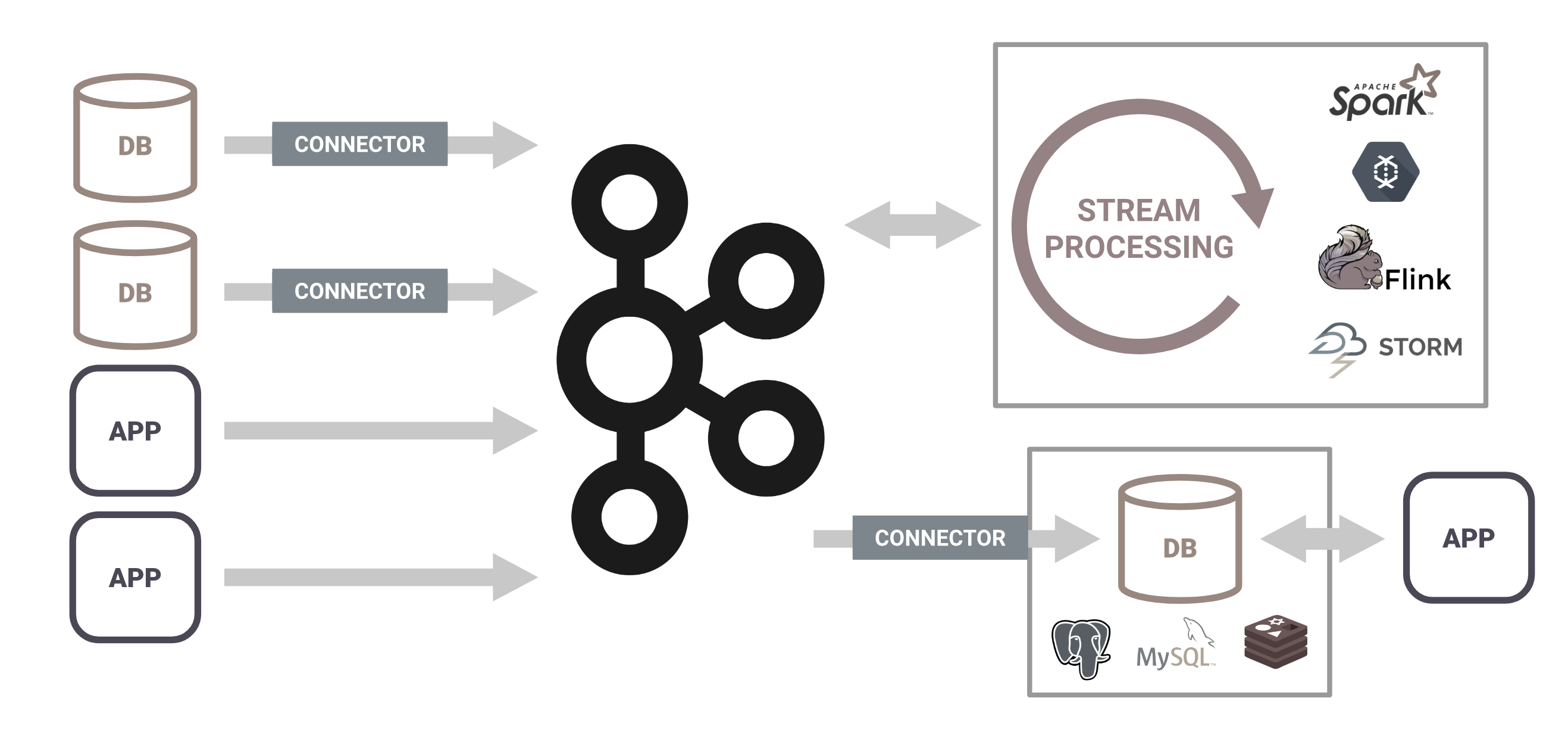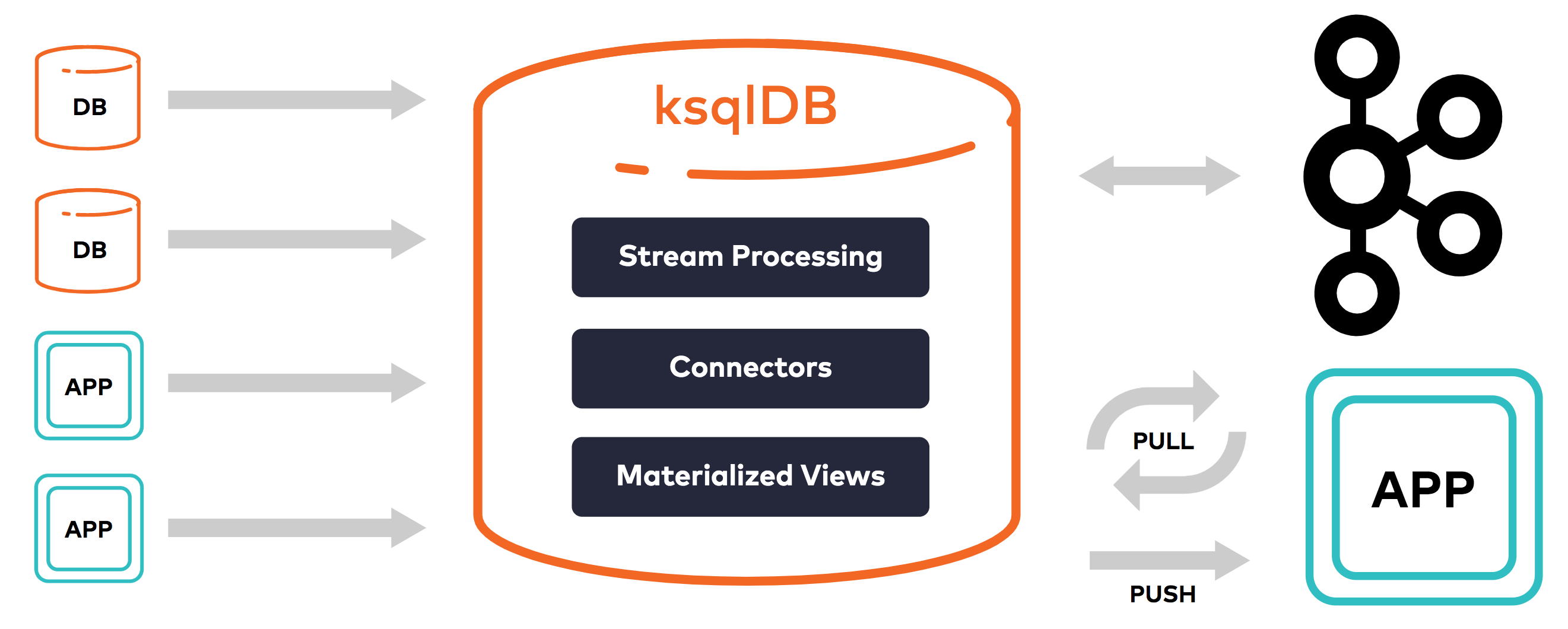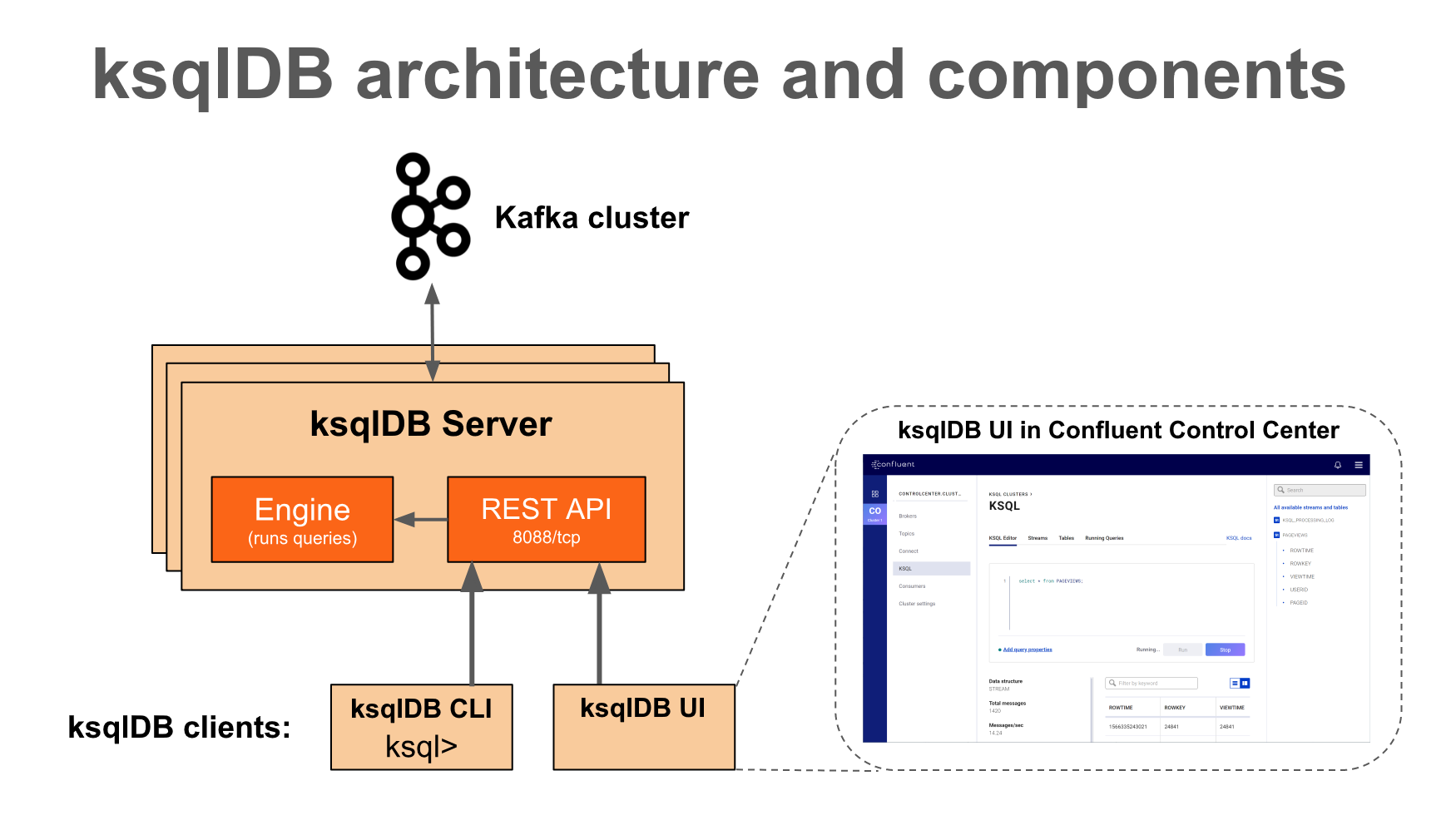What is ksqlDB?¶
ksqlDB is an event streaming database purpose-built to help developers create stream processing applications on top of Apache Kafka®.
Why use ksqlDB to build stream processing applications?¶
In today’s world, applications that leverage stream processing need a heavyweight architecture that requires integrating several distributed systems together. These architectures often include a fleet of connectors or agents for acquiring events from the outside world, durable storage to house these events, a stream processing framework for processing the events, and a database to serve aggregations of events to applications.

Unfortunately, the parts don't fit together as well as you'd hope; all of these systems are complex, and each integration is a small project to figure out. It's like trying to build a car out of parts, but the parts come from different manufacturers who don't talk to each other.
It shouldn't be this difficult to build stream processing applications.
ksqlDB greatly reduces the operational complexity required to build stream processing applications, which enables you to build real-time systems without requiring significant time and overhead. It combines the power of real-time stream processing with the approachable feel of a database, through a familiar, lightweight SQL syntax. And because ksqlDB is natively powered by Apache Kafka®, it seamlessly leverages the underlying, battle-tested event streaming platform.

What are the components of ksqlDB?¶
These are the core categories that are foundational to building an app: collections, materialized views, and queries.
Collections¶
Collections provide durable storage for sequences of events. ksqlDB offers two kinds of collections: streams and tables. Both operate under a simple key/value model.
- Streams are immutable, append-only collections. They're useful for representing a series of historical facts. Adding multiple events with the same key means that they are simply appended to the end of the stream.
- Tables are mutable collections. They let you represent the latest version of each value per key. They're helpful for modeling change over time, and they're often used to represent aggregations.
Because ksqlDB leverages Kafka for its storage layer, creating a new collection equates to defining a stream or a table over a Apache Kafka® topic. You can declare a collection over an existing topic, or ksqlDB can create a new topic for the collection at declaration time. For more information, see Collections.
Materialized Views¶
Materialized views are derived representations of streams or tables. They enable you to create new collections over existing streams or tables. Materialized views are perpetually kept up to date as new events arrive. This means that you can chain materialized views together to create many representations of the same data. Materialized views are especially useful for maintaining aggregated tables of data. For more information, see Materialized Views.
Queries¶
While materialized views allow you to maintain state, queries enable you to access these materializations from applications or microservices. Applications can query materialized views with pull queries and push queries.
- Pull queries enable you to fetch the current state of a materialized view. Because materialized views are updated incrementally as new events arrive, pull queries run with predictably low latency. They're a good fit for request/response flows.
- Push queries enable you to subscribe to materialized view updates and stream changes. When new events arrive, push queries emit refinements, so your event streaming applications can react to new information in real-time. They’re a good fit for asynchronous application flows.
What Can I Do With ksqlDB?¶
- Streaming ETL
- Apache Kafka is a popular choice for powering data pipelines. ksqlDB makes it simple to transform data within the pipeline, readying messages to cleanly land in another system.
- Real-time Monitoring and Analytics
-
Track, understand, and manage infrastructure, applications, and data feeds by quickly building real-time dashboards, generating metrics, and creating custom alerts and messages.
- Data exploration and discovery
-
Navigate and browse through your data in Kafka.
- Anomaly detection
-
Identify patterns and spot anomalies in real-time data with millisecond latency, enabling you to properly surface out-of-the-ordinary events and to handle fraudulent activities separately.
- Personalization
-
Create data driven real-time experiences and insight for users.
- Sensor data and IoT
-
Understand and deliver sensor data how and where it needs to be.
- Customer 360-view
-
Achieve a comprehensive understanding of your customers across every interaction through a variety of channels, where new information is continuously incorporated in real-time.
How does it fit in my architecture?¶

- ksqlDB Server
-
The ksqlDB server runs the engine that executes SQL queries. This includes processing, reading, and writing data to and from the target Kafka cluster.
ksqlDB servers form ksqlDB clusters and can run in containers, virtual machines, and bare-metal machines. You can add and remove servers to/from the same ksqlDB cluster during live operations to scale ksqlDB's processing capacity as desired. You can deploy different ksqlDB clusters to achieve workload isolation.
- ksqlDB CLI
-
You can write SQL queries interactively by using the ksqlDB command line interface (CLI). The ksqlDB CLI acts as a client to ksqlDB Server. For production scenarios, you may also configure ksqlDB clusters to run in non-interactive "headless" configuration, which prevents access from ksqlDB CLI.
ksqlDB servers, clients, queries, and applications run outside of Kafka brokers, in separate JVM instances, or in separate clusters entirely.
Supported Versions and Interoperability¶
You can use Kafka with compatible Confluent Platform and Apache Kafka® versions.
| ksqlDB version | 0.8.0 |
|---|---|
| Apache Kafka version | 0.11.0 and later |